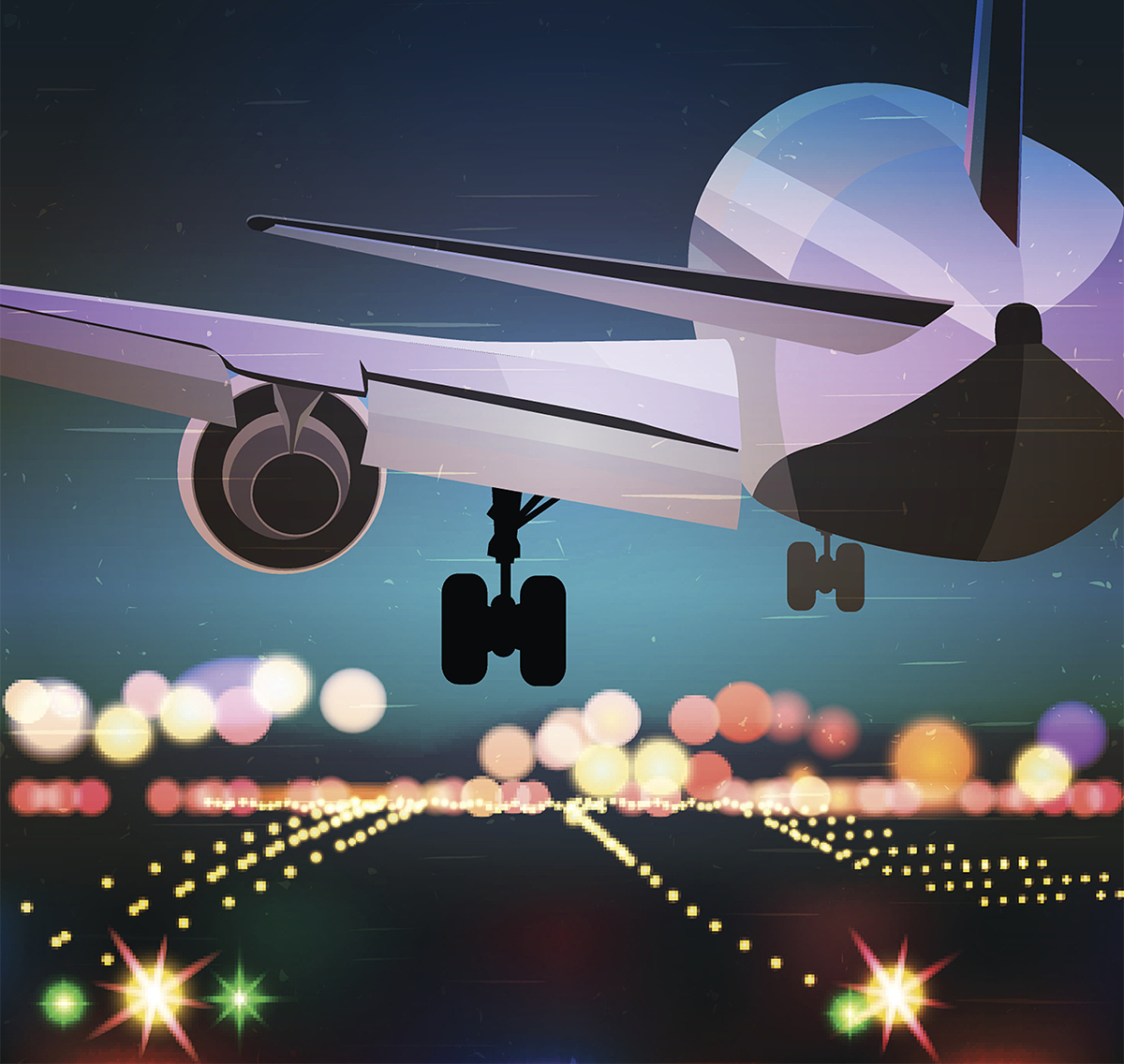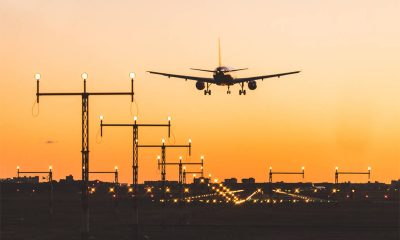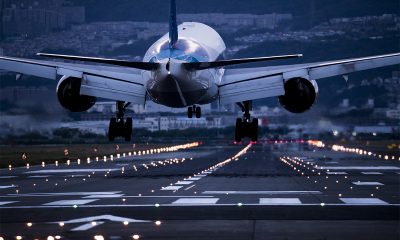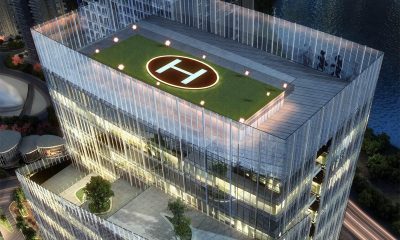Runway lighting is used to guide the takeoff and landing of the aircraft during nighttime and low visibility conditions. All runways licensed for night use are provided edge, threshold and end lighting which defines the extent of the runway.
Centerline and touchdown zone lighting is provided as additional guidance to facilitate low visibility operations. Portable battery-operated lights may be used in place of the fixed fixtures at small aerodromes where limited operations take place at night. Runway edge lights are placed off the edge of the area declared for use as the runway delineated by white edge markings. They are elevated or inset fixtures that emit white light except in the caution zone.
In the caution zone, which is the last 2,000 ft (610 m) of runway or one-half the runway length, yellow lights which are substituted for white lights emit yellow light in the direction facing the instrument approach threshold. Two straight lines of lights installed perpendicular from side to side of the runway define the lateral limits. These lights are spaced at equal distances with a longitudinal spacing between 55 and 60 m. They emit green light for arriving aircraft to indicate the start of the available landing distance and emit red light to indicate the end of the runway for departing aircraft. Runway end lights produce light to mark the extremity of the runway available for maneuvering of aircraft approaching the end of the runway.
Runway centerline lighting (RCL) is provided for instrument precision approach runways to warn a pilot of the approaching end of the runway. They are intended for use in visibility conditions down to runway visual range (RVR) conditions of 350 m. These lights emit white light up to 900 m from the runway end, alternate white and red light from 900 m to 300 m from the runway end, and red light for the last 300 m prior to the runway end.
Touchdown zone lighting (TDZL) is a landing aid that uses two rows of transverse light bars located symmetrically about the runway centerline to provide textural cues in the touchdown area.
Runway lighting is classified into three types of systems according to the intensity of light and level of control: high intensity runway lights (HIRL), medium intensity runway lights (MIRL), and low intensity runway lights (LIRL). HIRL is generally installed on runways operating under Instrument Flight Rules (IFR) and for runways utilizing Runway Visual Range (RVR). If a precision approach should be maintained in adverse weather conditions or in good visibility conditions where extraneous lighting around the airport could be disruptive to a pilot, the combined use of high intensity runway lights and an approach lighting system is recommended. MIRL is a three-stage intensity system generally installed on visual or non-precision instrument runways with the lights spaced at 60 m apart. LIRL is installed on visual runways in small airports.











